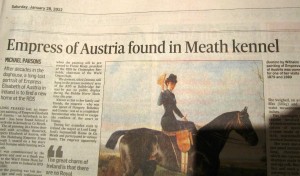Hitchcock’s classic for people in a hurry. Neat idea. I came on it in a thoughtful blog post by Michael Sacasas about voyeurism in Facebook.
So what exactly did Facebook buy for a billion dollars?
This morning’s Observer column.
So Facebook has bought Instagram, a company with a single product – a photosharing app – for $1bn in cash and (FB) shares. Just to put that in context, Instagram has been in existence for 18 months, employs 13 people, has 30 million users and has had a grand total of $7m in investment funding. Oh, and it has precisely zero dollars in revenue.
Sound familiar?
There’s been lots of really interesting commentary about the Instagram deal. Writing in the FT, John Gapper made two interesting points:
And Frederic Filloux, one of my favourite commentators, is also sceptical about the deal — and about facebook generally. “When I read the news of the Instagram acquisition”, he writes, “I wondered: Imagine Facebook already trading on the Nasdaq; how would the market react? Would analysts and pundits send the stock upward, praising Zuckerberg’s swiftness at securing FB’s position? Or, to the contrary, would someone loudly complain: What? Did Facebook just burn the entire 2011 free cash-flow to buy an app with no revenue in sight, and manned by a dozen of geeks? Is this a red-flag symptom of Zuckerberg’s mental state?”
Other points Filloux makes:
LATER: Andy Baio has made an interesting attempt to work out an empirical rationale for the price Zuckerberg paid for his new toy.
Seaward bound
The life of the (hypocritical) mind
Adam Gopnik has a lovely piece about Albert Camus in the April 9 issue of the New Yorker (sadly, behind a pay wall) in the course of which he neatly evicerates the hypocrisy of a certain celebrated caste of French intellectuals:
For all their self-advertised agonies, the lives Sartre and Camus led after the war mostly sound like a lot of fun. Their biographies are popular because they dramatise the agonising preoccupations of modern man and also because they present an appealing circle of Left Bank cafes and late-night boîtes and long vacations. A life like that implicitly assumes that the society it inhabits will go on functioning no matter what you say about it, that the cafes and libraries and secondhand bookstores will continue to function despite the criticism. A professor at the College de France who maintains that there should be no professors at the College de France does not really believe this, or else he would not be one. This isn’t a luxury that thinkers in Moscow, still less Phnom Penh, ever had. Sartre’s great sin was not his ideology, which did indeed change all the time. It was his insularity. The apostle of ideas in action didn’t think that ideas would actually alter life; he expected that life would go on more or less as it had in spite of them, while always giving him another chance to make them better. Nice work, if you can get it.
So how did Mitt Romney make his money?
Lovely explanation of the private equity racket by Robert Reich.
Thornham marsh
We went for a wonderful muddy walk this morning, but eventually reached the point where we’d have needed waders to continue.
IT support is no picnic
Here’s an acronym that, I am reliably assured, is common parlance among IT Support staff:
PICNIC
It stands for “Problem in chair, not in computer”.
You have been warned.
Thanks to Andrew Ingram for enlightening me.
Norfolk in April
Yesterday on the North Norfolk coast.
Vicious Cycle
Lovely blog post by Sean French.
It seemed such a good idea at the time. We were going to visit Nicci’s parents in Worcestershire. I looked at a map and saw that we could cycle almost the whole way on the canal. We could cycle the last bit through lovely country lanes. It would take two days. I went online and booked a hotel on the banks of the canal about halfway along. It would be like those pre-First World War trips through England made by people like Edward Thomas and Hilaire Belloc.
I forgot that there were other pre-First World War trips, like those made by Captain Scott and the good ship Titanic.
But there had been a month of dought and hot sunshine, so at least the weather would be good, right?
So two days ago we set off early in the morning, joining the Regents Canal at Kings Cross. The journey out of London is strange and interesting and really, really long. It was three and a half hours before we hit real countryside. Interesting fact: from Camden Lock it’s twenty-seven miles until you reach the next lock, which means that it’s completely flat.We cycled relentlessly past familiar names: Harefield (isn’t there a heart hospital there?), Berkhamsted (where Graham Green went to the school where his father was the headmaster), Milton Keynes (in the seventies there used to be a TV commercial with the slogan: ‘Someday, all cities will be like Milton Keynes.’ I really hope not.). But it was all taking a bit too long, and then we got a puncture. And then there are towpaths and there are towpaths. Some are smooth and some are rough and some are rutted and some are like cycling through an unkempt lawn.
Darkness started to fall and you don’t want to be on a canal towpath in the middle of nowhere in pitch darkness…
You can tell he’s one half of a very successful thriller-writing duo, can’t you. I mean to say, luring the innocent reader into the horror like that.




